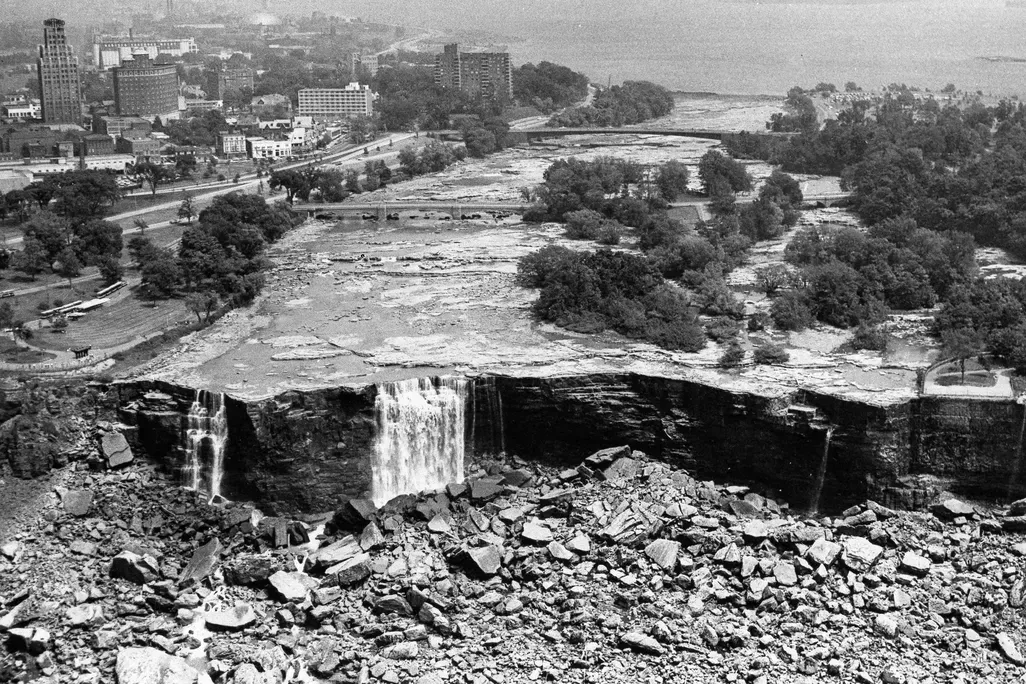
The Dewatering of Niagara Falls
For five months in 1969, the famed waters of Niagara Falls no longer flowed.
Niagara Falls has existed for over 12,000 years. In that time, scientists estimate that the natural wonder has slowly eroded seven miles upstream to its current location. The name “Niagara” comes from the Indigenous peoples who first inhabited the land. One of the earliest native tribes in the region called themselves the Onguiaahra, or later the Ongiara, meaning “Thunder of Waters.” The Seneca tribe named the area “Near–Gar,” meaning “The Strait.” Early French explorers transformed “Near–Gar” into “Ni–a–ga–ra.”
Today, Niagara Falls is a combined trio of waterfalls. Every second, 3,160 tons of water flow over the Falls, totaling 75,750 gallons over the American and Bridal Veil Falls and 681,750 gallons over the Horseshoe Falls.
What would Niagara Falls look like without its majestic waters? On June 12, 1969, the U.S. Army Corps of Engineers (USACE) “turned off” the flow of water over the American Falls as part of a $90,000 scientific study. In actuality, they created a cofferdam to hold back and divert the Niagara River’s eight–foot–deep water. Over 100,000 people visited the Falls that first weekend to view the strikingly barren cliff and soft–shale riverbed.
The study was commissioned after Cliff Spieler, a
Niagara Falls Gazette reporter, raised the alarm in 1965 about the imminent “death” of the American Falls. Engineers, politicians, naturalists, and residents feared that the Falls would erode over time and cease to exist; they were also concerned about the pile of rocks and trees blocking the flow of water at the base of the Falls. Additionally, unsightly boulders had collected at the base for almost 40 years—drastically cutting the height of the Falls in half. The USACE removed the debris and made the necessary repairs to help fix these problems and slow the erosion rate.
Five months later, the waters started to flow over the Falls again. Within a few days, its mighty roar was back to normal. However, there was irreversible environmental damage. The dewatering resulted in the death of thousands of channel trees located on the islands in the Niagara River because they were lodged in rock and no longer had access to flowing water. When the water ceased, the rock face also started to crumble and deteriorate, which led to rockslides.
Despite these and other efforts to slow the erosion rate, the Falls continue to retreat a little each year. As a result, some scientists predict that Niagara Falls will completely disappear in about 15,000 years.
Niagara Falls Heritage Area

